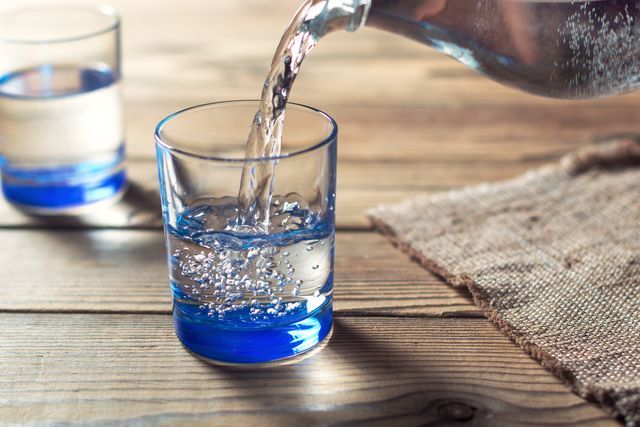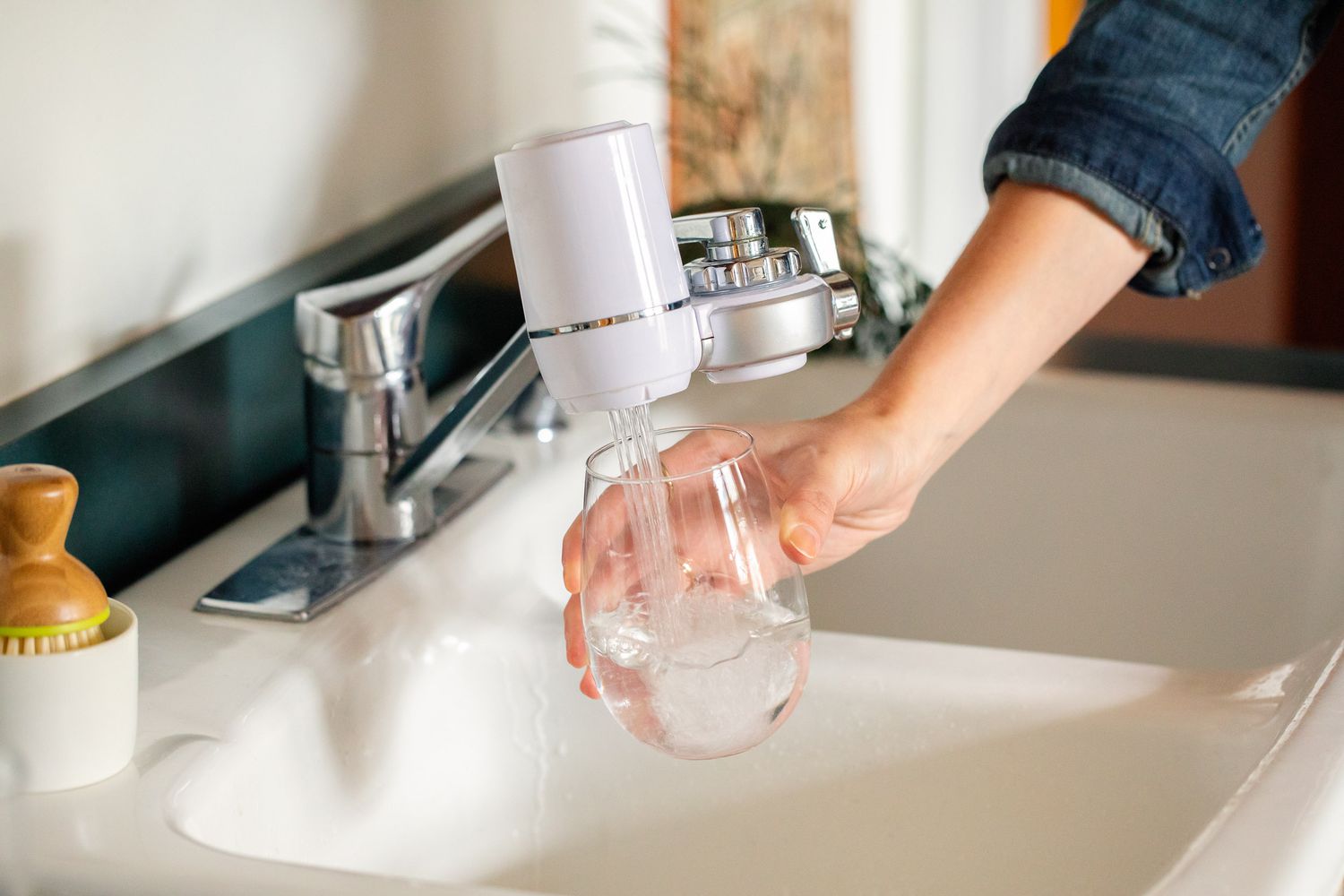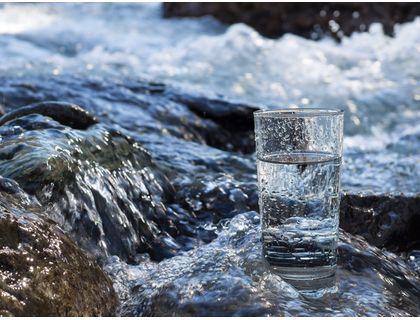Are you concerned about the quality of the water coming out of your tap?
Tap water is a staple in our daily lives, but there are significant concerns about its safety and potential health risks.
In this comprehensive article, we will explore the various contaminants found in tap water, including chlorine, fluoride, lead, bacteria, and viruses, as well as the implications of consuming these contaminants.
We will delve into the reasons why tap water may be detrimental to our health, the environment, and even affect its taste and odor. We will discuss practical solutions for improving the quality of tap water, such as whole house water filtration, boiling, and adding minerals, as well as exploring alternative water sources. If you’re curious about the alternatives to tap water, from bottled and distilled water to spring water and filtered water, we’ve got you covered. Get ready to gain valuable insights into the world of tap water and discover how to make informed choices for your health and well-being.
What is Tap Water?
Tap water refers to the water supplied to a tap or faucet in a home, school, or workplace. It is a crucial source of drinking water for millions of Americans and is regulated by the US government, particularly the Environmental Protection Agency (EPA), to ensure its safety and quality.
The quality of tap water is of utmost importance as it directly impacts public health. Community water systems, under the supervision of the EPA, adhere to strict regulations and standards to monitor and treat tap water. These measures are in place to minimize the presence of contaminants and ensure that tap water meets the Safe Drinking Water Act standards. With constant monitoring and testing, the EPA aims to safeguard the public from potential health risks associated with impure tap water, making it essential for sustaining healthy communities.

What Are The Contaminants Found In Tap Water?
The contaminants found in tap water can vary, with some of the most concerning being per- and polyfluoroalkyl substances (PFAS), arsenic, and lead. These substances can pose significant health risks and are regulated by the EPA through stringent standards to address water quality problems across the country.
PFAS, commonly used in a variety of consumer products, have been linked to adverse health effects, including cancer and developmental issues. Arsenic, a naturally occurring element, can seep into water supplies from geological deposits and industrial pollution, posing risks to human health over time. Lead contamination, often stemming from old pipes and plumbing fixtures, can cause severe developmental and neurological problems, particularly in children.
Due to their potential harm, the EPA sets maximum contaminant levels for these substances in tap water, constantly monitoring and regulating their presence. Challenges remain in addressing widespread exposure and ensuring compliance with these stringent standards to safeguard public health.
Chlorine
Chlorine is a commonly used disinfectant in the treatment of tap water to control microbial contaminants and ensure its safety for consumption. The EPA has established regulations and guidelines for the appropriate levels of chlorine in public water systems to maintain water quality standards.
When chlorine is added to water, it forms hypochlorous acid and hypochlorite ions, which are highly effective in destroying a wide range of harmful microorganisms such as bacteria, viruses, and parasites. This process, known as chlorination, is crucial in preventing waterborne diseases and protecting public health. The EPA regulates the maximum residual disinfectant levels to ensure that chlorine concentrations in drinking water remain within safe limits, balancing effective disinfection with potential health concerns.
Fluoride
Fluoride is often added to tap water to promote dental health and prevent tooth decay, with the EPA providing guidelines for its optimal levels in community water systems. This addition to tap water has been a public health initiative to improve oral hygiene and reduce dental problems in the population.
Adding fluoride to tap water has been a widely accepted measure to help reduce cavities and promote oral health. By incorporating fluoride into municipal water supplies, it ensures that individuals receive a consistent, low dosage of fluoride, which has been shown to strengthen tooth enamel, making it more resistant to decay. This approach is especially beneficial in reaching the entire community, including those who may not have access to regular dental care.

Lead
Lead contamination in tap water is a significant concern due to its adverse health effects, especially in vulnerable populations such as children and pregnant women. The EPA has stringent regulations to minimize lead exposure from drinking water and has been actively working to address lead contamination in public water systems across the country.
Exposure to lead from tap water poses serious health risks, ranging from developmental delays and learning disabilities in children to high blood pressure and kidney problems in adults. Vulnerable populations, including pregnant women, can experience adverse pregnancy outcomes and potential harm to the developing fetus. The EPA’s efforts to reduce lead levels in drinking water involve monitoring and treatment measures, as well as educational campaigns to raise awareness about the risks of lead exposure. Despite these efforts, ongoing vigilance and proactive measures to protect the health of vulnerable populations are crucial.
Bacteria and Viruses
Bacteria and viruses are potential contaminants in tap water that can lead to waterborne illnesses and pose health risks. The EPA has established standards and testing protocols to monitor and control the presence of these microbial contaminants in public water systems, safeguarding the population from waterborne diseases.
Waterborne illnesses caused by bacterial and viral contamination in tap water can range from mild gastrointestinal discomfort to severe and sometimes life-threatening infections. Exposure to pathogens like E. coli, norovirus, and hepatitis A through contaminated water sources can result in symptoms such as nausea, vomiting, diarrhea, and fever. Individuals with weakened immune systems are at heightened risk, making it crucial for strict adherence to EPA standards and testing procedures in water treatment and distribution to ensure the safety of tap water.

Why Is Tap Water Bad For Us?
Tap water can be harmful to human health due to the presence of toxic contaminants such as PFAS, which have been linked to adverse health effects. The exposure to PFAS and other harmful substances in tap water has raised concerns, leading to stringent EPA regulations to address the health risks associated with contaminated drinking water.
PFAS, or per- and polyfluoroalkyl substances, are a group of synthetic chemicals that have been used in various industrial and consumer products. They are persistent in the environment and can accumulate in the human body over time, posing potential health risks. Long-term exposure to PFAS has been associated with a range of adverse health effects, including increased cholesterol levels, immune system dysfunction, and certain types of cancer.
The EPA has set health advisory levels for PFAS in drinking water, and water utilities are required to test and treat for these substances. Concerns remain regarding the widespread presence of PFAS in tap water and the potential health impacts on vulnerable populations, such as pregnant women and children.
Efforts to mitigate the adverse effects of contaminated tap water include:
- The implementation of advanced water treatment technologies.
- The development of alternative sources of clean drinking water, such as filtered or bottled water.
- Public awareness and advocacy for stricter regulations and investment in infrastructure.
All of these are crucial in addressing the health risks associated with tap water consumption.
Health Risks
Consuming tap water contaminated with PFAS and other harmful substances can pose serious health risks, including potential links to various illnesses and adverse health effects. The EPA’s standards for monitoring and regulating these contaminants aim to mitigate the health risks associated with contaminated tap water.
PFAS (per- and polyfluoroalkyl substances) have been linked to a range of health issues such as reproductive and developmental effects, liver damage, immune system disorders, and an increased risk of certain types of cancer. Additionally, contaminants such as lead, arsenic, and chlorine have been associated with neurological damage, cardiovascular effects, and gastrointestinal illnesses, further highlighting the dangers of consuming contaminated tap water.

Environmental Impact
The contamination of tap water with PFAS and other harmful substances can also have detrimental environmental impacts, affecting ecosystems and natural water sources. The EPA’s regulations and remediation efforts aim to minimize the environmental impact of PFAS contamination in water systems.
PFAS contamination in tap water not only poses risks to human health but also jeopardizes the delicate balance of natural ecosystems and water sources. These harmful substances can accumulate in aquatic habitats, affecting the delicate balance between flora and fauna. The widespread contamination of natural water sources can lead to the disruption of entire ecosystems, impacting aquatic life and the surrounding environment.
Taste and Odor
Contaminants in tap water, such as PFAS and other chemicals, can result in unpleasant tastes and odors, affecting the overall quality of drinking water. The EPA’s standards for water quality focus on addressing taste and odor concerns to enhance the palatability of tap water for consumers.
When compounds like PFAS seep into water supplies, they can create an off-putting taste and smell, making the water unappealing to drink. Consumers are increasingly sensitive to the slightest change in water quality, so even a subtle alteration in taste or odor can impact their perception of the water’s safety and cleanliness.
It is essential for regulatory authorities, such as the EPA, to set stringent guidelines to ensure that water treatment facilities monitor and minimize the presence of such contaminants. This proactive approach not only safeguards public health but also ensures that tap water meets the expectations of consumers in terms of flavor and aroma.
How Can We Improve The Quality Of Tap Water?
Improving the quality of tap water can be achieved through various methods, such as filtration, boiling, and adherence to EPA regulations for clean water standards. These approaches aim to mitigate the presence of contaminants and ensure the delivery of safe and clean drinking water to consumers.
In terms of filtration, using a water filter can be highly effective in removing impurities and improving taste. Boiling water is another simple yet effective method that kills bacteria and viruses that may be present. Adhering to EPA regulations is crucial for maintaining proper water quality standards and ensuring the safety of tap water. Such measures are essential in safeguarding public health and providing peace of mind to households across the country.

Filtering
Utilizing filtration systems can effectively remove contaminants and impurities from tap water, addressing water quality problems and meeting the EPA’s regulations for clean drinking water.
These filtration methods play a crucial role in improving the overall quality and safety of tap water for consumption. By trapping sediments, chemicals, and bacteria, filtration systems help in reducing the risk of waterborne diseases and health issues. The use of such systems reduces the reliance on single-use plastic bottles, contributing to environmental sustainability.
The implementation of EPA regulations and guidelines further emphasizes the significance of employing filtration systems to ensure that tap water is free from harmful contaminants and safe for consumption.
Boiling
Boiling tap water is a simple yet effective method for water purification, helping to eliminate harmful microorganisms and potential contaminants. Adhering to the EPA’s standards for water purification through boiling can significantly contribute to improving the safety and quality of tap water.
When boiling tap water, the high temperature kills off harmful bacteria, viruses, and parasites that may be present. It also helps in removing any chemical impurities that could be harmful when consumed. The process doesn’t require any special equipment and can be done with just a pot and a heat source, making it accessible to everyone. By adhering to the EPA’s guidelines, individuals can ensure that the water is purified effectively, reducing the risk of waterborne illnesses.
Adding Minerals
Supplementing tap water with essential minerals can contribute to enhancing its overall quality and mineral content, aligning with the EPA’s standards for maintaining beneficial mineral levels in drinking water. This approach aims to improve the nutritional value and taste of tap water for consumers.
Minerals like calcium, magnesium, and potassium are crucial for human health, and their presence in tap water can address deficiencies that individuals may have in their diet. In addition, these minerals can also enhance the taste of water, making it more palatable for daily consumption.
Some regions may have lower natural mineral content in their tap water, making it essential to supplement it with minerals. Doing so not only aligns with regulations but also ensures that consumers receive a more balanced water composition, promoting improved health outcomes.

Using Alternative Water Sources
Exploring alternative water sources, such as purified or spring water, can offer opportunities to access clean drinking water while adhering to EPA regulations for water quality. These alternative sources provide additional options for consumers to ensure the availability of safe and clean drinking water.
By incorporating purified or spring water into the water supply, communities can diversify their sources of clean drinking water, reducing the dependence on traditional municipal sources. This diversity not only offers a safety net in case of contamination or infrastructure issues but also promotes resilience in the face of climate variability.
The use of alternative water sources can contribute to decreasing the burden on existing water treatment facilities, potentially lowering overall costs for maintaining water quality standards.
What Are The Alternatives To Tap Water?
Along with tap water, consumers have access to various alternatives, including bottled water, distilled water, and other filtered options, as highlighted by Consumer Reports.
These alternatives cater to individuals with diverse preferences and quality considerations. Bottled water, for example, offers convenience and portability, making it a popular choice for on-the-go hydration. On the other hand, distilled water, known for its purity, appeals to those seeking a mineral-free option. Filtered water systems, equipped with different technologies, provide customizable solutions tailored to specific water quality concerns.
Consumer Reports’ insights into these alternatives serve as an invaluable resource, guiding consumers in making informed decisions based on quality, cost, and environmental impact. By evaluating factors like taste, safety, and environmental sustainability, Consumer Reports give the power to consumers to select the best-suited drinking water option for their needs.
Bottled Water
Bottled water serves as a convenient alternative to tap water, offering a portable and readily available source of drinking water. Consumer Reports provides insights into the quality and safety considerations associated with various bottled water options, aiding consumers in making informed choices for their hydration needs.
Many people rely on bottled water for its convenience, especially when on the go or in areas where tap water may not be readily accessible. The portability of bottled water makes it a popular choice for outdoor activities, travel, and emergencies.
The wide availability of bottled water in various sizes and formats caters to diverse consumer needs and preferences.

Distilled Water
Distilled water represents a purified alternative to tap water, known for its high level of purity and absence of contaminants.
It is widely recognized for its suitability in various applications such as laboratory use, medical procedures, and cosmetic manufacturing, where the absence of impurities is crucial. The purification process involves vaporizing the water and condensing it back into liquid form, effectively removing impurities and contaminants. This results in water that is free from minerals, bacteria, and other pollutants commonly found in tap water, making it a reliable choice for those seeking pure, clean water.
Spring Water
Spring water serves as a natural alternative to tap water, sourced from natural springs and known for its potential mineral content. Consumer Reports provides valuable assessments of different spring water sources, enabling consumers to consider the natural qualities and considerations associated with spring water for their drinking preferences.
With increasing awareness of the potential health benefits associated with mineral-rich spring water, consumers are seeking out more information to make informed decisions about their water choices. Spring water is often touted for its purity and natural sourcing, appealing to those looking for a refreshing and untainted hydration option.
Consumer Reports plays a pivotal role in offering detailed evaluations of various spring water brands, guiding individuals in their selection process. By understanding the geological origins and mineral content of spring water, consumers can make informed choices that align with their preferences and health considerations.
Filtered Water
Filtered water represents a customizable alternative to tap water, allowing consumers to purify their drinking water based on their specific preferences and quality standards. Consumer Reports offers insights into the effectiveness and considerations of various filtration methods, give the power toing consumers to make informed choices for their hydration needs.
Filtered water systems provide the flexibility to target specific contaminants, ranging from chlorine to heavy metals, catering to individual taste and health concerns. This purification process ensures that water not only tastes better but also meets higher standards for safety. Consumer Reports’ evaluations help users understand how different filters perform with respect to their particular needs, such as under-sink filters for a residential setting or pitcher filters for a more portable option.
By providing this valuable information, Consumer Reports aids in guiding consumers towards the most suitable filtration solution for their homes.

Frequently Asked Questions (FAQS)
Why is Tap Water So Bad For Us?
Tap water is considered bad for us because it often contains harmful contaminants that can have negative effects on our health.
What kind of contaminants are found in tap water?
Tap water can contain a variety of contaminants, including bacteria, viruses, pesticides, heavy metals, and chemicals like chlorine and fluoride.
How can these contaminants impact our health?
The presence of these contaminants in tap water can lead to a range of health issues, including gastrointestinal problems, reproductive issues, and even an increased risk of cancer.
Why is tap water treated with chlorine and fluoride?
Chlorine is added to tap water as a disinfectant to kill harmful bacteria and viruses. Fluoride is added to help prevent tooth decay.
Is tap water regulated?
Yes, tap water is regulated by the Environmental Protection Agency (EPA) to ensure that it meets certain safety standards. However, these standards may not be strict enough to protect against all contaminants.
How can we ensure the safety of our tap water?
To ensure the safety of tap water, it is important to regularly test for contaminants and invest in a high-quality water filtration system. It is also recommended to follow local water advisories and boil water if necessary.